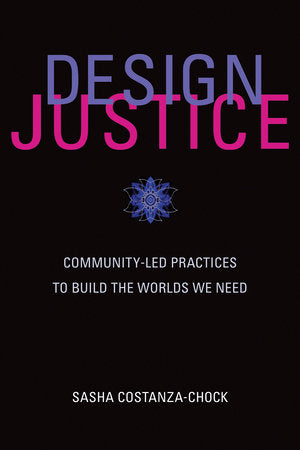
"Design Justice" by Sasha Costanza-Chock
Share
I was looking to learn more about Accessibility / Inclusivity and Design and was recommended "Design Justice" by Sasha Costanza-Chock.
While the book sheds interesting insights into the opportunity that comes with building with diversity in mind, social activism and empowering communities, my main points of reflection have to do with thinking of design of products and services.
Type of design approaches:
- Value-Sensitive Design - is usually influenced by 3 types of biases: pre-existing bias, technical bias and emergent bias. An example of pre-existing bias is a graphical user interface that was created with no consideration towards vision-impaired people. Technical bias can occur in cases such as poor performance of optical sensors on darker-skinned people. Emerging bias is where something was not created with bias in mind but that appears when new user base comes to exhibit that behaviour and influences things, see Microsoft Tay.
- Universal Design - deliberate design for accessibility.
- Inclusive Design - design that considers the gull range of human diversity with respect to ability, language, culture, gender, age and other forms of human difference. This group sees disability as a social constructed and relational, rather than a binary problem. Disability is a mismatch between the needs of the individual and the design of the product, system or services. With this framing, disability can be experienced by anyone excluded by the design.
Some popular "best-practices" to reconsider:
- User Personas - they are short fictional characterizations of a product users, often with a name, an image and a short description. While there is a benefit to grounding the designer in the end outcome when done correctly, there is no systematic study yet to whether the use of diverse user personas produce less discretionary outcomes.
- Disability Simulations - an example of this would be a person that doesn't have a mobile disability asked to use a wheelchair as a way of understanding the experience of the user. While they can create a sense of empathy, the simulations created an unrealistic understanding of the life experience.
Instead the book recommends:
- Adopting co-design methods. Spend time with your user in their space, learning about their needs, and working together in ALL stages of the design process. That differentiation of all stages is especially important typically users are only asked to provide input in limited capacity and the solution is brought to them after it has already been designed.
- Develop specific, concrete mechanisms for community accountability. The people most impacted by an issue, need to be involved in solving the issue.
- Center community needs over tools. Needs should drive technology, not the other way around.
- Invest in education (formal and informal) that teaches co-design methods to more participants.
- Support maintenance, not just innovation.
- Focusing on how you scope the problem, often times bad designs start with the wrong questions being asked at the beginning of the design process.
- If you go the route of solving issues and coming with with solutions via hackathons, focus on community lead diverse ones. An example of that is #A11yCan (it focuses on the design of products, devices and services, or environments that can be used by people with disability".
Lastly, the author advocates for principles when it comes to design:
- Principle 1: We use design to sustain, heal and empower our communities, as well as to seek liberation from exploitative and oppressive systems.
- Principle 2: We centre the voices of those we are directly impacted by the outcomes of the design process.
- Principle 3: We prioritize design's impact on the community over the intentions of the designer.
- Principle 4: We view change as emergent from an accountable accessible, and collaborative process, rather than as a point in the end of the process.
- Principle 5: We see the role of the designer as a facilitator, rather than an expert.
- Principle 6: We believe that everyone is an expert based on their own lived experience and that we all have unique and brilliant contributions to bring to a design process.
- Principle 7: We share design knowledge and tools with our communities.
- Principle 8: We work towards sustainable, community-led, and controlled outcomes.
- Principle 9: We work towards nonexploitative solutions that reconnect us to the earth and to each other.
- Principle 10: Before seeking new design solutions, we look for what is already working in community level, and we honour and uplift traditional, indigenous and local knowledge and practices.
If I were to summarize the learnings of this book, they would be "build with, not for". Include a diverse set of users in your product or project from the beginning to the end - that might require involvement of the community, recruiting new people or partnering with another organization. The benefits of designing a process accessible for all certainly outset the effort, just ask companies such as OXO who set up to make better kitchen utensils with people with arthritis, and quickly became the go-to product for everyone!
